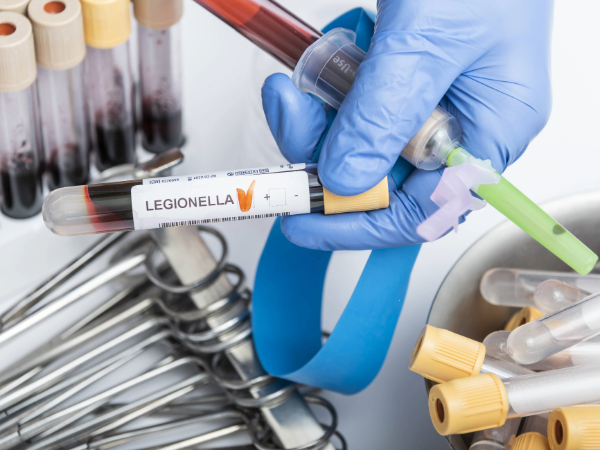 A recent deadly outbreak of Legionnaires’ disease in New York is a stark reminder that this invisible threat could be lurking in the water mist you breathe every day, from your shower to a decorative fountain or a building’s cooling towers.
A recent deadly outbreak of Legionnaires’ disease in New York is a stark reminder that this invisible threat could be lurking in the water mist you breathe every day, from your shower to a decorative fountain or a building’s cooling towers.
Though it feels like a new danger, the bacteria behind this illness have haunted public health for nearly 50 years.
Charles Turnbough, Ph.D., Professor Emeritus in the UAB Department of Microbiology, provides insight into how Legionella spreads illness and why understanding this bacterium is critical to preventing outbreaks.
A brief history
In the summer of 1976, over 2,000 members of the Pennsylvania chapters of the American Legion gathered at a Philadelphia hotel for their annual convention. Within days, the celebration spiraled into a public health crisis as attendees were struck by sudden high fevers, relentless coughs, and crushing fatigue. Dozens were hospitalized, and 29 died.
It took six months of investigation before scientists identified the culprit: Legionella pneumophila. This strange and deadly pneumonia outbreak would earn a name that still carries weight today: Legionnaires’ disease.
A survivor in harsh environments
What makes L. pneumophila so dangerous isn’t just its ability to cause disease; it’s the remarkable ways it survives.
“This short, rod-shaped bacterium can take on three forms, such as drifting freely in water, embedded within protective biofilms that coat surfaces, or hidden inside single-celled organisms like protozoa,” Turnbough described. “These protective mechanisms shield it from chlorine, heat, and other disinfectants that would kill most bacteria.”
Unlike many microbes, L. pneumophila can adapt to an impressive range of environments from natural lakes and rivers to the plumbing of hotels, hot tubs, cooling towers, and decorative fountains.
“It can endure temperatures from just above freezing to 63°C, but it multiplies most efficiently between 25–42°C, precisely the conditions found in many engineered water systems,” Turbough added.
The silent route to infection
Unlike contagious respiratory viruses, Legionnaires’ disease doesn’t spread from person to person. You won’t catch it from a handshake or drinking contaminated water. Instead, the real danger lies in inhaling tiny, invisible droplets of water mist contaminated with L. pneumophila.
“Once inside the lungs, it has a deadly trick,” Turnbough explained. “Instead of being destroyed by macrophages, which are white blood cells meant to kill invaders, it hijacks them, turning these immune defenders into bacterial incubators. As the bacteria multiply, they burst the cells and spread deeper into the body, sometimes causing multi-organ damage.”
Older adults, smokers, people with chronic lung disease, and the immunocompromised are most at risk, but outbreaks can affect anyone.
Stopping an invisible enemy
Legionnaires’ disease can strike quickly, with symptoms like fever, cough, muscle aches, and shortness of breath that may appear as soon as two days after exposure.
“These symptoms often resemble common illnesses such as influenza, COVID-19, or other types of pneumonia, making the disease easy to miss,” Turnbough stated. “Because of this overlap, misdiagnosis is common. Rapid testing of sputum or urine samples is essential to confirm Legionella infection.”
The good news is that when caught early, there are several highly effective antibiotics available.
“Stopping this invisible threat depends on carefully managing water systems, regularly heating water above 55°C, or treating it with strong chemical disinfectants to eradicate the bacteria before it can spread,” Turnbough said.
Because symptoms emerge rapidly and resemble other respiratory infections, quick diagnosis and prompt treatment are critical to preventing severe illness and saving lives.
Public awareness and prevention
Public and medical awareness is one of the biggest challenges in combating Legionnaires’ disease. Many medical professionals may never have encountered a case, making education critical to improving early diagnosis and treatment and saving lives.
“Many people don’t realize how serious the infection can be, or that everyday places like hotels, convention centers, and hospitals with complex water systems can harbor the bacteria,” Turnbough said. “Anyone who has spent time in these environments should stay alert for early symptoms and seek medical evaluation without delay.”
Awareness, early detection, and swift treatment are our best defenses against Legionnaires’ disease. By understanding the risks and acting quickly at the first signs of illness, we can stop outbreaks before they spread and ultimately save lives.